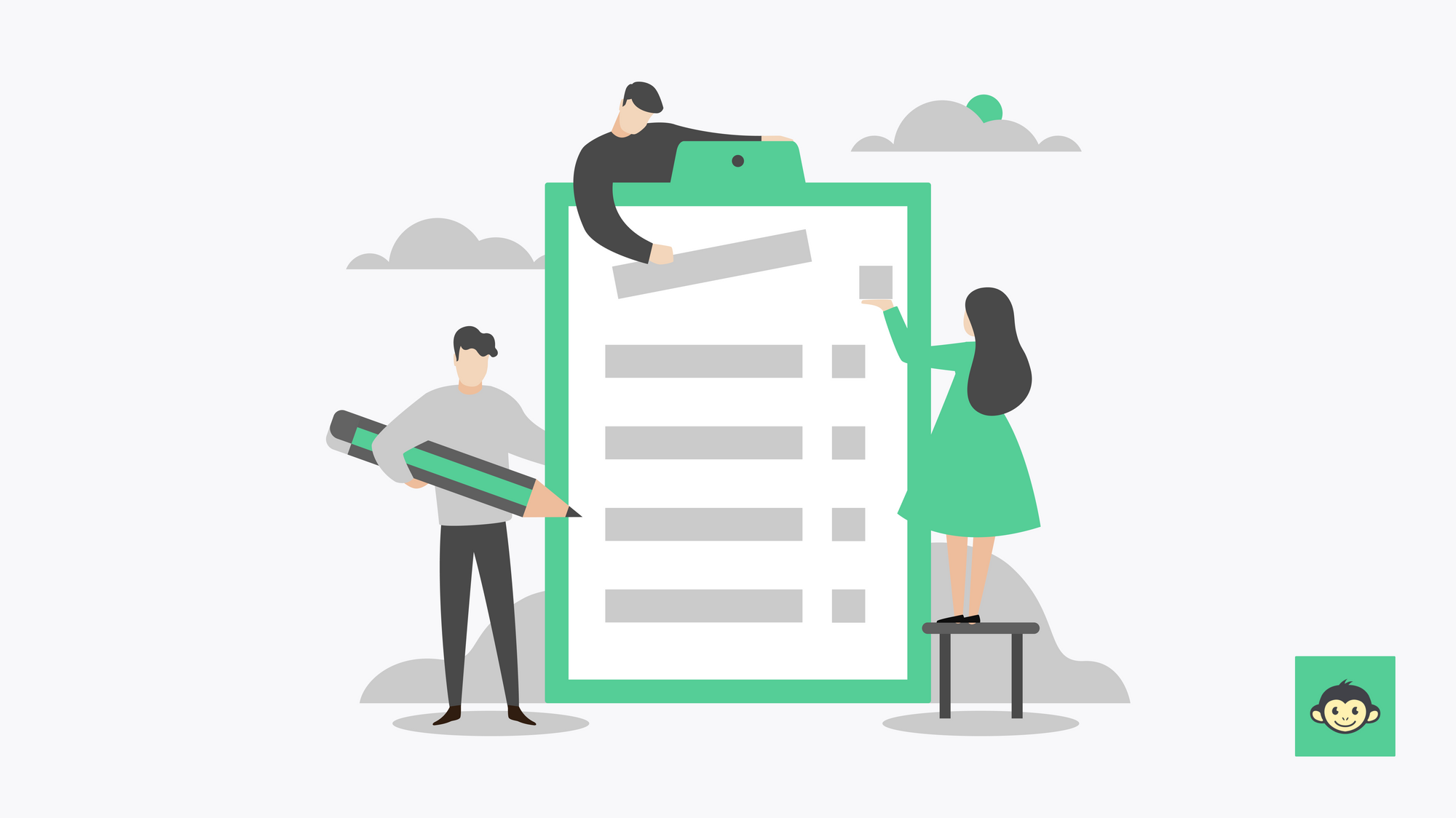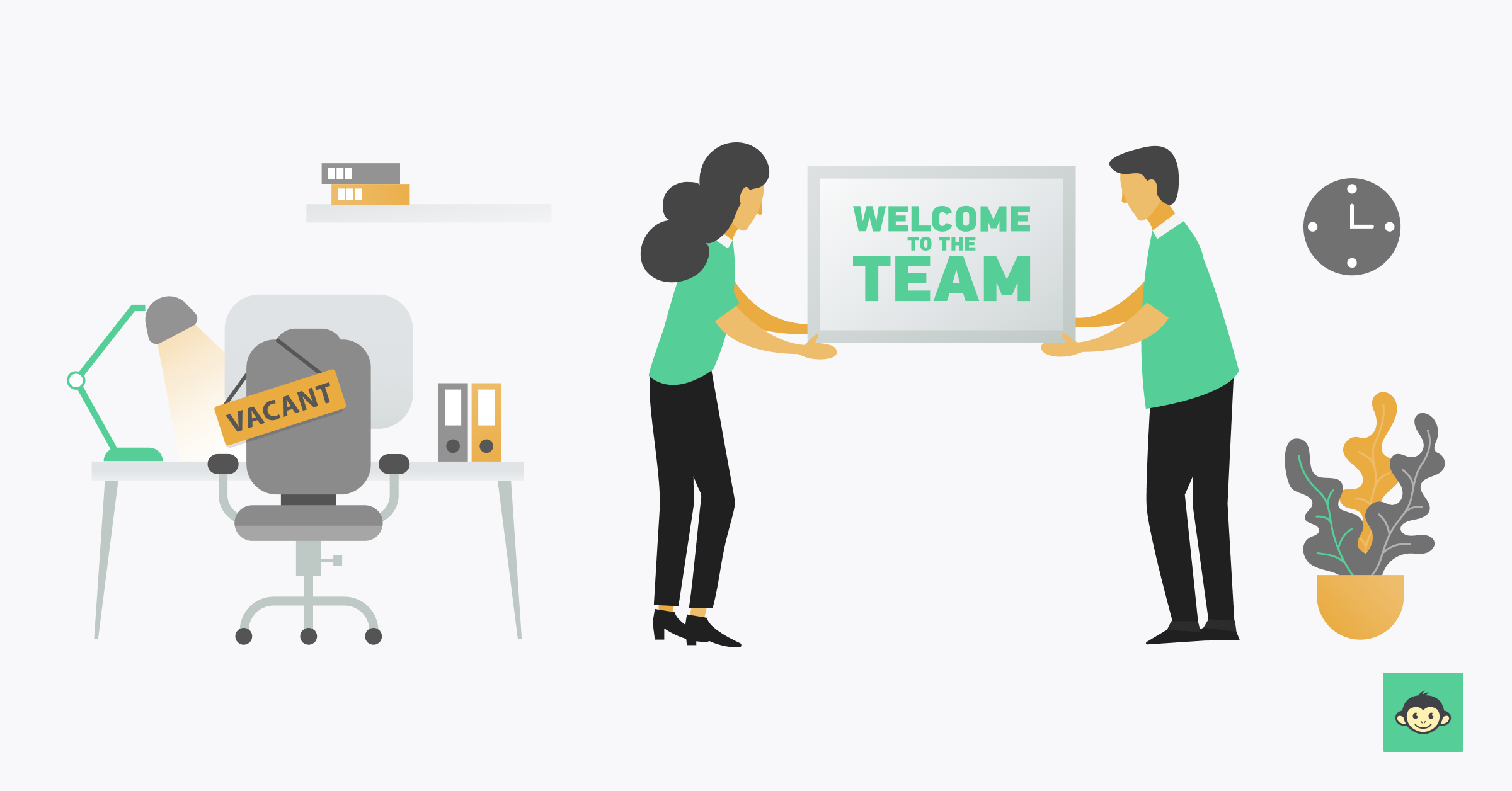Onboarding new hire checklist: Essential steps for organizational success in 2024

Imagine this: you have just hired a fresh batch of talent, eager to embark on their professional adventure with your company. They enter your office with anticipation, excitement, and perhaps a touch of trepidation.
It's a pivotal moment, and you need an onboarding checklist to guide them through this exhilarating journey.
The onboarding process is not merely about filling out paperwork and providing a workstation (though those are crucial steps). It's about creating an experience to set the stage for a long and fruitful relationship between your new hire and the organization.
So, gather your team, align your visions, and let's embark on this incredible onboarding adventure together. We'll cover everything from creating a warm welcome to fostering camaraderie and ensuring new team members seamlessly settle into your company's culture.
What is the employee onboarding process?

The employee onboarding process is an important aspect of integrating new hires into an organization effectively. It encompasses various procedures and activities designed to familiarize new employees with the company culture, policies, procedures, and their roles and responsibilities. Typically, the onboarding process begins before the employee's first day and extends through their initial weeks or months on the job.
Key components of this process may include paperwork completion, orientation sessions, training programs, introductions to colleagues and supervisors, and access to necessary resources. A well-structured onboarding process not only helps new employees acclimate quickly but also sets the stage for long-term success and engagement within the organization.
Moreover, it serves as an opportunity for employers to communicate expectations clearly, instill company values, and foster a sense of belonging. By investing in a comprehensive onboarding process, organizations can enhance employee satisfaction, retention, and overall productivity.
Why is employee onboarding the most crucial stage of the employee lifecycle?

Employee onboarding is the most crucial stage of the employee lifecycle, establishing the foundation for a successful employee experience. It sets the tone, shaping first impressions and fostering a sense of belonging.
A well-executed onboarding process aligns employees with company goals, values, and mission, enhancing engagement and job satisfaction. It provides the new hire with the necessary tools, resources, and relationships to become productive contributors from day one. In comparison, a disorganized onboarding experience can leave employees feeling lost and disconnected.
Additionally, onboarding offers a prime opportunity to address skill gaps through training and development, supporting ongoing growth. By prioritizing a comprehensive onboarding process, the hiring manager creates a positive work environment, maximizes employee potential, and improves retention rates. It's the springboard for a successful and fulfilling employee journey within the organization.
5 Onboarding statistics that you should know about!

- According to SHRM, new employees who completed a structured onboarding program had a 58% higher chance of staying with the organization after three years.
- Allied HR's data reveals that it typically requires eight months for a newly hired employee to achieve full productivity.
- Brandon Hall Group's findings show that organizations with a robust onboarding process witness an 82 percent increase in new hire retention and over 70 percent improvement in productivity.
- Gallup's research highlights that despite the vital role of onboarding, only 12% of employees consider their employer's onboarding process to be sufficient or successful.
- SHRM also reports that finding a replacement for an employee costs 90% to 200% of their annual salary.
What are the 4 key phases of onboarding?

The onboarding process typically consists of four key phases, each serving a specific purpose in acclimating a new hire and helping them become productive members of your organization. Let's explore these phases:
1. Pre-boarding
This initial phase begins before the new hire's first day and involves preparing them for a smooth transition. It includes tasks like sending welcome emails, providing essential paperwork in advance, and sharing information about their role, team, and the company.
Pre-boarding sets the stage for a positive onboarding experience and helps new hires feel excited and prepared for their first day.
2. Orientation
The orientation phase focuses on introducing new employees to the broader aspects of the company and their specific roles. It typically takes place during the first few days or weeks.
Orientation activities may include company tours, presentations on company values and culture, introductions to key team members, and training on company policies and procedures. The goal is to provide a comprehensive overview that helps a new hire understand the organization's structure, mission, and expectations.
3. Training and development
In this phase, the new employees receive job-specific training and development opportunities to enhance their skills and knowledge. They may undergo formal training programs, shadow experienced colleagues, or participate in workshops or online courses.
The training and development phase aims to equip new employees with the necessary tools and resources to excel in their roles and contribute to the organization's success.
4. Integration
The integration phase focuses on fully integrating the new hire into their teams and the work environment. It involves ongoing support, mentorship, and regular check-ins to ensure their smooth transition. During this phase, new employees are encouraged to actively participate in team projects, collaborate with colleagues, and contribute their ideas.
Integration activities may include team-building exercises, social events, and opportunities to connect with employees across the organization. The integration phase helps a new hire develop strong relationships, feel valued, and become fully integrated members of the company.
What is the new hire onboarding checklist?
A new hire onboarding checklist is an essential tool for organizations to ensure a smooth transition for freshly hired employees. This comprehensive list guides companies through the process of welcoming and integrating new team members. The checklist typically begins with pre-arrival preparations, including setting up workstations, access to necessary tools, and sending out introductory materials.
It progresses to the first-day activities, such as introductions to the team and an overview of company policies. As the onboarding process advances, the checklist covers training sessions, departmental overviews, and clearly defining job expectations.
Furthermore, the checklist aids in the completion of paperwork, including federal tax compliance and employment contracts. It facilitates the enrolment in benefits and familiarizes new hires with the company's culture and values. Regular check-ins with supervisors, access to required training, and opportunities for social integration are also commonly included.
Why is a new hire checklist important?

Have you ever started a new job and felt like you were thrown into the deep end without a life jacket? That's exactly why a new hire checklist is like a beacon of light for both employees and employers. It's not just a piece of paper with tasks; it's a roadmap to success for everyone involved.
- Smooth transition: Starting a new job can be overwhelming. A checklist ensures that your new hires don't feel lost or unprepared. It's like having a guide holding your hand through those initial uncertain days.
- No missed steps: Ever had that nagging feeling you forgot something? A new hire checklist is designed to cover all the bases, from paperwork to training. It's your safety net against missed steps that could cause confusion or delays.
- Good first impressions: We all know first impressions stick. A well-structured onboarding process, facilitated by a checklist, creates a positive and professional image of the company. It sets the tone for the entire employee experience.
- Engagement boost: Feeling welcomed and informed from day one boosts engagement. A checklist ensures that your newbies are introduced to the team, the company culture, and their responsibilities in a way that keeps them excited and motivated.
- Employee retention: Companies invest time and resources into finding the right talent. A new hire checklist ensures that these valuable recruits stick around. When employees feel supported and confident in their roles, they're more likely to stay for the long haul.
- Compliance and clarity: Navigating paperwork, policies, and benefits can be like deciphering a secret code. An employee checklist ensures that your new hires understand everything they need to know, reducing the risk of compliance issues or misunderstandings down the line.
- Productivity power-up: A smooth onboarding process means new hires can get to work faster. A checklist helps them access the tools and knowledge they need promptly, transforming them into productive team members sooner.
8 Things to include in an onboarding checklist for new hires

Here are some key items to include in an employee onboarding checklist. Remember, this is a general checklist, and you can customize it based on your organization's specific needs and requirements.
The goal is to ensure that a new employee receives the necessary information, support, and resources to transition smoothly into their roles and become valuable contributors to the company.
1. Pre-boarding
- Send a welcome email or letter.
- Provide necessary paperwork, such as employment contracts and tax forms, in advance.
- Share information about the first day, including the dress code, the schedule, and any required documents or identification.
2. Administrative tasks
- Set up computer systems, email accounts, and other necessary technology.
- Arrange for security badges or access cards.
- Explain company policies related to attendance, leave, and code of conduct.
3. Introduction to the company
- Conduct a formal company orientation, including an overview of the organization's mission, values, and goals.
- Provide an organizational chart to help new employees understand the company's structure.
- Share information about the company's history, culture, and key stakeholders.
4. Role and responsibilities
- Clearly define the new hire's job description and performance expectations.
- Provide training on specific job tasks and responsibilities.
- Schedule meetings with team members and key stakeholders to establish working relationships.
5. Training and development
- Offer job-specific training sessions or workshops.
- Provide access to relevant resources, manuals, or online training materials.
- Discuss opportunities for professional development and growth within the organization.
6. Benefits and compensation
- Explain employee benefits, such as healthcare plans, retirement options, and paid time off.
- Discuss compensation details, including payroll processes and any bonus or incentive programs.
7. Company culture and social integration
- Arrange team-building activities or social events to foster connections.
- Assign a mentor or buddy to support the new hire's integration into the team.
- Encourage participation in company-wide events or initiatives.
8. Ongoing support and feedback
- Schedule regular check-ins to provide guidance and address any concerns.
- Establish a system for ongoing performance feedback and evaluations.
- Offer opportunities for continuous learning and professional growth.
New hire onboarding checklist for teams to ensure smooth onboarding

Here is a new hire checklist for different teams that play a crucial part in onboarding. Remember that this is not an exhaustive list, and depending on your organization, you might need to add or remove tasks to this list.
Tasks for hiring managers
- Prepare a detailed job description and communicate it to HR.
- Schedule interviews and selection process.
- Provide necessary information about the team and department to HR and IT.
- Set up an onboarding schedule for the first day.
- Communicate expectations, goals, and responsibilities.
- Assign a team buddy or mentor to support the new employee’s integration.
Tasks for HRs
- Collect required employment paperwork, such as contracts, tax forms, and emergency contact information.
- Set up the new hire in the HR system and payroll.
- Coordinate background checks and any necessary drug screenings.
- Communicate employee benefits and provide necessary enrollment forms.
- Prepare the employee handbook and other relevant onboarding materials.
- Conduct general orientation sessions, including company procedures.
Tasks for IT teams
- Provision computer systems, email accounts, and necessary software.
- Set up network access and security permissions.
- Provide technical support and troubleshooting assistance.
- Conduct cybersecurity training and ensure compliance with IT policies.
- Set up access to relevant internal systems and tools.
- Coordinate any necessary hardware or equipment setup.
Tasks for team buddies
- Welcome the new teammate and provide a tour of the workplace.
- Introduce them to team members and key stakeholders.
- Help familiarize the new hire with team dynamics and workflows.
- Provide guidance and support in navigating work culture and norms.
- Share knowledge about team-specific processes and resources.
- Assist in answering questions and addressing concerns.
Onboarding documents required for the new hire
- Employment contract and offer letter.
- Tax forms
- Emergency contact information.
- Employee handbook and company T&C
- Benefits enrollment forms.
- Training materials and resources specific to the role.
- IT-related documents, such as system access information and user guides.
- Any other team-specific documents or materials are relevant to the new hire's responsibilities.
By following this checklist, hiring managers, HR teams, IT teams, and team buddies can ensure a smooth onboarding experience.
Examples of new hire checklist templates

Have you ever joined a new workplace and felt a bit lost amidst the flurry of information and tasks? That's precisely why employee onboarding template is the unsung heroes of seamless onboarding.
These structured guides ensure employers and employees embark on a well-organized journey together. Let's delve into the key components of various new hire checklist templates:
The welcome email checklist:
- Warm greetings: Craft a personalized welcome email introducing the new hire to the team and the company culture.
- Essential information: Provide details about the first day, including location, time, dress code, and any necessary documents.
- Tech set-up: Offer clear instructions for setting up email, access to company tools, and necessary accounts.
- Team introduction: Include a brief overview of the new hire's team members and their roles.
- Company values: Highlight key company values that resonate with the organization's culture.
- Welcome note: Attach a short message from the CEO or a team leader welcoming the new hire.
- Buddy assignment: Assign a buddy to help the new hire navigate their first weeks and answer questions.
- Parking information: If applicable, provide details about parking arrangements and any necessary permits.
Pre-onboarding checklist:
- New hire paperwork checklist: Ensure all legal and administrative documents are ready for the new hire's review and signature.
- Training materials: Share relevant training materials or pre-reading resources to help them hit the ground running.
- Access arrangements: Coordinate system access, building entry, and any required security clearances.
- Emergency contacts: Request emergency contact information from the new hire for safety purposes.
- FAQ document: Provide a document addressing common questions about the onboarding process.
- Virtual tour: Share a virtual tour of the office space or workplace environment.
- Dress code details: Provide specific guidelines for the dress code, including any variations for different days or occasions.
- Onboarding schedule: Share a detailed agenda for the first few days, including training sessions and meetings.
First-day checklist:
- Warm welcome: Have someone ready to greet the new hire and give them a tour of the office or virtual workspace.
- Introduction sessions: Schedule introductions with team members, supervisors, and key stakeholders.
- Equipment handover: Provide necessary tools, devices, and ensure the workstation is ready.
- Welcome kit: Prepare a small welcome package with company-branded merchandise and essentials.
- Office etiquette: Share a document outlining office etiquette and norms to help the new hire assimilate smoothly.
- Coffee or lunch: Plan a casual coffee or lunch session with the new hire's immediate team members.
- IT support contact: Provide the contact information for IT support in case of any technical issues.
- Company policies: Share key company policies and procedures that the new hire should be aware of.
First-week checklist:
- Role and expectations: Conduct comprehensive orientation sessions about the job role, responsibilities, and performance expectations.
- Company overview: Offer insights into the company's history, mission, values, and long-term goals.
- Initial tasks: Assign tasks that allow the new hire to apply their skills and get a feel for their role.
- Peer networking: Arrange informal meetings with peers from different departments to encourage networking.
- Daily check-ins: Establish brief daily check-in sessions to address any immediate concerns or questions.
- Skill assessment: Administer a brief self-assessment to understand the new hire's strengths and areas for development.
- Online resources: Provide a list of online tools and resources available for learning and professional growth.
- Performance metrics: Discuss the key performance indicators (KPIs) by which the new hire's success will be measured.
First-month checklist:
- Feedback channels: Establish regular feedback sessions to address any questions or concerns the new hire may have.
- Training plan: Outline the training schedule for the upcoming months, including any workshops or courses.
- Mentorship match: If applicable, pair the new hire with a mentor who can guide them through their professional journey.
- Cross-functional exposure: Arrange shadowing opportunities with other departments to broaden their understanding.
- Goal setting: Collaborate with the new hire to set clear performance goals for the first few months.
- Social event: Organize a team-building or social event to help the new hire further integrate into the team.
- Resource person: Identify a specific person the new hire can reach out to for questions related to office resources.
- Learning budget: Inform the new hire about any budget allocated for their professional development and learning resources.
How to prevent infant attrition in the onboarding stage?

Ever planted seeds in your garden only to see some delicate sprouts not making it past the early stages? Well, think of new hires as those young sprouts, and preventing "infant attrition" during the onboarding stage is all about nurturing them for long-term growth.
Let's delve into how to keep these promising talents from withering away:
- Clear expectations: Just like plants need the right environment, new hires need a clear understanding of their roles and responsibilities. Uncertainty can lead to frustration.
- Structured onboarding: Create a well-structured onboarding process. When they have a roadmap, they're less likely to feel lost or overwhelmed.
- Mentorship: Assign a mentor or buddy to guide them through the initial days. Having someone to turn to for questions fosters a sense of belonging.
- Feedback culture: Regular check-ins provide a platform for them to express concerns, share their experiences, and get feedback on their progress.
- Meaningful work: Engage them in meaningful tasks right from the start. Feeling like they're contributing adds value to their role.
- Social integration: Help them form connections with colleagues. Feeling socially integrated reduces the feeling of isolation.
- Continuous learning: Provide opportunities for skill development and growth. Employees want to see a path to progress within the organization.
- Communication: Keep the communication lines open. Address any challenges they might be facing promptly.
- Recognition: Acknowledge their achievements, even the small ones. Feeling appreciated boosts morale.
- Company culture: Immerse them in the company's culture and values. When they align with these, they're more likely to stay.
- Flexibility: Consider their work-life balance needs. A flexible approach shows you value their well-being.
- Personalized approach: Recognize that every individual is different. Tailor their onboarding experience to their unique needs.
- Surveys and feedback: Regularly ask for their input on the onboarding process. Their insights can highlight areas for improvement.
- Long-term vision: Help them see a future within the company. When they envision growth, they're less likely to seek opportunities elsewhere.
- Celebrate milestones: Acknowledge their achievements and work anniversaries. It reinforces their sense of belonging.
Conclusion
By following this onboarding checklist, you've set your new hires on a path to success, ensuring they feel welcomed, supported, and ready to conquer new horizons. But the journey doesn't end here.
To continue nurturing a culture of feedback and growth, consider partnering with CultureMonkey. The employee engagement platform enables companies to gather anonymous feedback from employees seamlessly, unlocking valuable insights for continuous improvement.
With CultureMonkey's unique features, you can ensure your new hires feel heard and supported, fostering engagement from day one. So unleash the potential of your new hires and embark on a voyage of continuous improvement.
FAQs
How can I effectively onboard new employees remotely?
Effectively onboarding new employees remotely requires careful planning and utilization of digital tools. Start by providing comprehensive orientation materials and schedules, ensuring clarity on roles and expectations. Conduct virtual meetings to introduce new hires to team members and supervisors, fostering connections. Offer remote training sessions using video conferencing and interactive platforms to facilitate learning.
What tools and technologies are essential for remote onboarding?
Essential tools and technologies for remote onboarding include video conferencing platforms like Zoom or Microsoft Teams for virtual meetings and training sessions, collaboration tools such as Slack or Microsoft Teams for seamless communication and file sharing, and digital document management systems like DocuSign or Adobe Sign for completing and storing paperwork electronically.
How do I ensure new employees feel connected and engaged in a remote onboarding process?
Ensuring new employees feel connected and engaged in a remote onboarding process requires deliberate efforts to foster communication and collaboration. Encouraging virtual introductions and team-building activities can help forge connections among colleagues. Providing opportunities for social interactions through virtual coffee breaks or casual chats can also contribute to a sense of belonging.
What steps can I take to provide a comprehensive virtual training experience?
To provide a comprehensive virtual training experience, it's imperative to start by carefully planning the curriculum and selecting appropriate digital platforms and tools for delivery. Clear communication of objectives, schedules, and expectations is vital to ensure participants understand the training process. Incorporating interactive elements such as quizzes, polls, and breakout sessions can enhance engagement and retention of material.
How can I maintain clear communication and address any challenges that arise during remote onboarding?
Maintaining clear communication during remote onboarding involves leveraging various digital tools such as video conferencing, instant messaging, and email to provide updates and address any challenges promptly. Establishing regular check-ins with new hires to address concerns and provide support is essential. Creating an open and transparent communication environment where questions are encouraged and feedback is valued can help mitigate challenges effectively.
What are the 5 C's of new hire onboarding?
The 5 C's of new hire onboarding encompass clarity, consistency, compliance, culture, and connection. Clarity involves providing clear expectations and objectives. Consistency ensures uniformity in the onboarding process. Compliance ensures adherence to legal and organizational requirements. Culture focuses on integrating new hires into the company's values and norms. Connection emphasizes building relationships with colleagues and supervisors to foster a sense of belonging.



